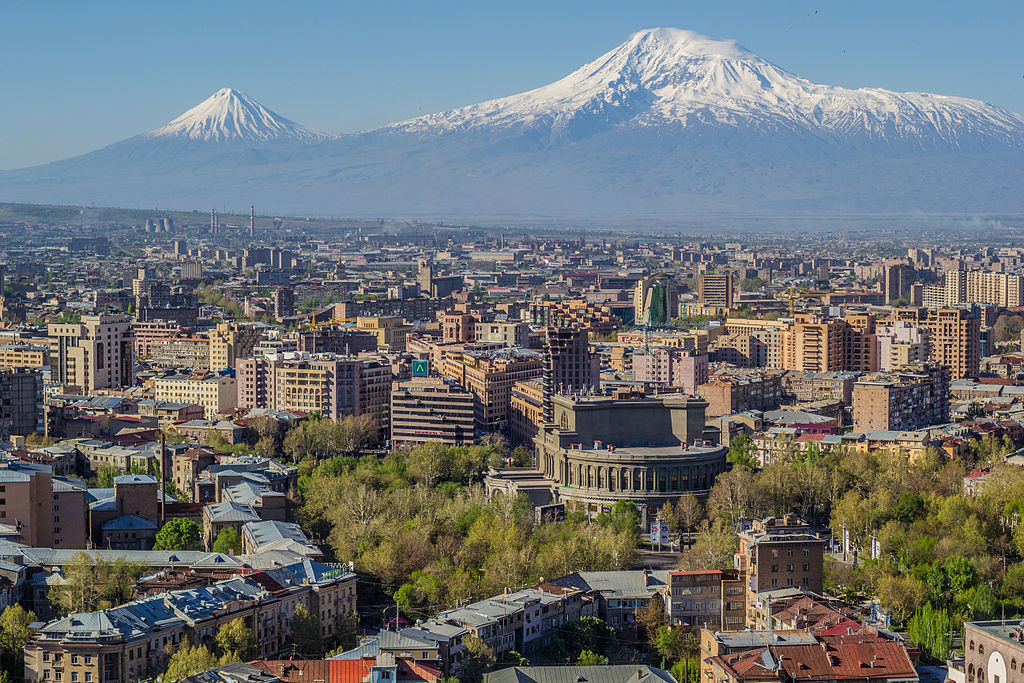 |
| (Armenia's Coat of Arms) |
Past and Present Struggles
Armenia carries a burdened and tragic past. It has seen independence under powerful kingdoms and it has been conquered by mighty empires. The most famous tragedy in Armenian history was the Ottoman Empire's systematic destruction of the Armenian people in the early 20th Century. The atrocities the Ottomans inflicted on the Armenians - history's first documented genocide - still reverberates in Turkish-Armenian relations. Internationally, maybe not all examples are as famous as the Armenian Genocide, but the nation has faced many other struggles. The Armenian people have faced persecution for their Christian faith, witnessed much of their homeland fall to more powerful neighbors, and have been thrust in the middle of Russo-Turkish conflicts for many centuries. Armenia is a landlocked nation - forcing it to depend on other nations for shipping access. For most of the 1900s, Armenia served as a Soviet bloc nation. Today, it faces conflict with its neighbor, Azerbaijan. Especially in times of trouble, its important for people to seek out symbols of unity. For the Armenian people, that symbol was and is Mt. Ararat.
Mt. Ararat & The Ark

According to the Book of Genesis (Gen 8:4), Noah's Ark came to rest in the mountains of Ararat. Later in the story, the descendants of Japheth (Noah's son) settled in Armenia and the surrounding lands. Armenians have long embraced this heritage; becoming the first Christian nation in 301 AD. A closer look at Armenia's Coat of Arms reveals just how deeply the country promotes its ties the Biblical narrative. In the center of the coat of arms is Mt. Ararat. Situated horizontally across Ararat? Noah's Ark.
The "Lost" Symbol
 |
| (Mt. Ararat viewed from the Armenian capital of Yerevan: ) |
Mt. Ararat towers over Yerevan (Armenia's capital city) and although Armenians can glimpse at the mountain on a daily basis, there is a problem. Mt. Ararat is not in Armenia. It is in Turkey. Overtaken by Turkish forces in the post-WWI era, today Mt. Ararat serves as Turkey's tallest mountain. Armenians can look upon Ararat, but they cannot touch. Despite this, the mountain remains synonymous with Armenia. A testament to Armenian will and fortitude; Ararat physically belongs to Turkey, but spiritually, traditionally, and emotionally - Ararat belongs to the Armenian people.
Thanks for reading.
Image Attribution: Mt. Ararat Picture: By Սէրուժ Ուրիշեան (Serouj Ourishian) (Own work) [CC BY-SA 3.0 (http://creativecommons.org/licenses/by-sa/3.0)], via Wikimedia Commons

No comments:
Post a Comment